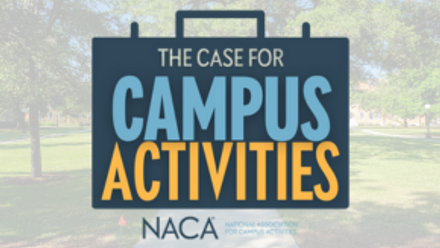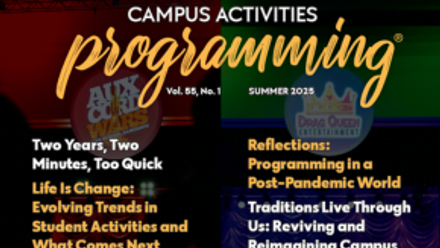The Social Connection of Blue Zones
In the new Netflix series "Living to 100: Secrets of the Blue Zones," Dan Buettner explores the longevity secrets of regions known as "Blue Zones," where people live longer and healthier lives. This series goes beyond typical health advice, demonstrating how social connections actually contribute to a longer and more fulfilling life. Throughout this blog, we will extract meaningful insights from the series and translate them into actionable strategies for guiding students toward improving connections on campus.
The documentary starts in Okinawa, Japan, where laughter, joy, and community are seen throughout the city. “Always have fun,” Omitta-San says. “Always have fun…[and] have fun with everyone." People are outside, playing games with their neighbors and are known for talking and laughing with their “moai”. Moai is a cultural concept, defined as a social support group formed to provide varying support, including social, health, or other interests. From having a meal together or just gathering to talk and laugh, these moais are common, promoting and creating strong bonds. Translating these insights to college life, the concept of moai offers valuable lessons. Students can cultivate intentional connections, forming their own support networks to navigate challenges, and leaning on these friends to help them through life experience. By fostering these bonds, individuals not only combat loneliness but also create a reminder that a community of support surrounds them. Campus professionals also play a pivotal role in encouraging and facilitating these connections through events, emphasizing the importance of lasting social bonds in the college experience and encouraging follow-up with newly established friend groups.
The next Blue Zone that is visited in the series is an island in the mediterranean sea: Sardinia. In Sardinia, there are many factors that are discussed such as food and terrain that both provide good physical health, however one of the biggest aspects of longevity in Sardinia is credited to their community. Community occurs in their kitchens, with groups of people cooking dinner, laughing and working together to create large meals. It’s also seen in shepherds, who go into town at the end of the day to enjoy time with friends. When asked about healthy community practices, the locals said they “make community a core value and stick together.” While many students may not cook in groups (or herd sheep throughout the day), the concept of socializing over food or gathering at the end of the day has been around forever. Campuses can encourage this type of behavior by creating places and opportunities for socialization between classes and at the end of the day, encouraging the natural gathering of groups and forming bonds among friends. Emphasizing the value of strong friendships and social bonds through events significantly impacts students' overall happiness and well-being, enhancing their mood through social connections.
“Longevity is activity and community.” This is the premise for the next Blue Zone: Loma Linda, CA. Loma Linda is unique in that it is the only Blue Zone in the United States, but also common in its principles of social connection. The Loma Linda community focuses on multiple events throughout the week, bringing people together around a common purpose and through volunteering. Volunteering is a core principle of the community and confirms other research, showing that volunteering in the local community can decrease feelings of loneliness and encourage healthy social habits. “When you know someone needs you and wants you to be in your life, that gives you longevity; [it] gives you something to live for… It’s building the community around activity.” The understanding of community around events is key and can be a great example to campus activities to encourage students to be involved in volunteering in their local area and leaning on their peers for contributing and helping towards a common goal. Whether it’s through encouraging students to get involved locally or by providing them a list of community needs, volunteering and gathering around a common purpose helps to increase feelings of connection with others.
In Ikaria, Greece, celebrations, dances, and social gatherings are essential for strengthening community. The locals will celebrate traditions through parties, where people are connecting, socializing and dancing all night long. Their core belief is that “community and connection is the prescription to longevity,” and they show that by celebrating traditions, laughing, and enjoying each other’s company. When it comes to traditions, a lot of campuses do a great job of celebrating these and passing them from one graduating class to the next, and if we follow Ikaria, we can see that these practices of celebrating can lead to a stronger community. How can traditions be celebrated on your campus, and are there any new events that can be established as a new tradition?
The term Plan de Vida is explored in the exploration of Nicoya, Costa Rica, which translates to “life plan”, but more importantly is linked to having purpose and working towards a goal or lifestyle. This community feels that 50% of how they connect contributes to longevity in their culture. “Having the right friends is the biggest secret to doing the right things…” For them this looks like eating with friends, slowing down for conversation, and paying attention to their immediate circle. Whether it's establishing sitting in smaller groups at campus events or encouraging conversations with new friends, we can learn a lot from a culture that puts emphasis on conversation and builds a circle of friends within a community.
After visiting these Blue Zones, Dan Buettner and his team took best practices from each location and tested their theories of longevity in Albert Lea, Minnesota, inspiring a Blue Zone-inspired project for a healthier lifestyle. They created pro-connection practices like organizing volunteering efforts and even created moais, challenging groups to walk together for 10 weeks, leading to half of these groups continuing to stay connected beyond the initial challenge. Finding opportunities to help implement Blue Zone practices can encourage new students to connect around a shared activity and goal, and it can even orchestrate friendships that go well beyond college years.
The final point of the series concluded with Singapore and their pursuit of creating a healthier and more connected community as well, which emphasizes “nudging” in the right direction. These nudges can be implemented on campus through healthier defaults and strategies that encourage students to make positive social choices.
The three nudges from Singapore that can be applied to college campuses are:
- Promote well-being on campus through activity programs and team events that foster movement and teamwork to build community and friendship among students.
- Establish areas where students are likely to "bump into each other”, facilitating casual social interactions throughout the day, lifting spirits and bringing positive vibes.
- Creating a dedicated environment and/or location where students can make plans to come together and enhance their overall experience, laying the foundation for lasting, meaningful connections.
Incorporating learnings from the Blue Zones into campus life has the potential to greatly impact student well-being on campus, shaping a more connected and fulfilling future beyond their college years. By centering activities around social connection, campuses can enhance happiness and overall wellness for both incoming and current students, and lay the foundation for a healthier and more connected student body.






